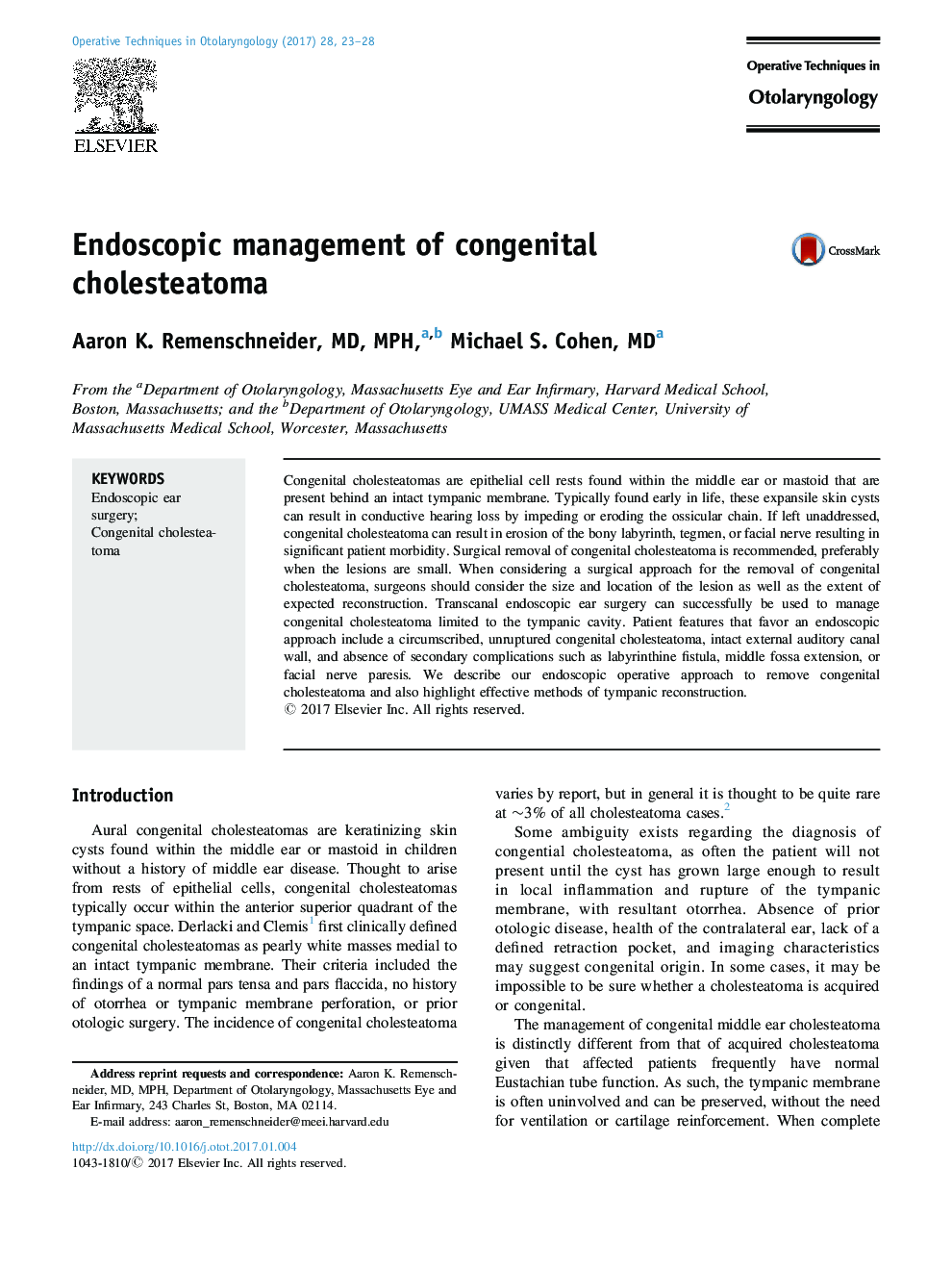| Article ID | Journal | Published Year | Pages | File Type |
|---|---|---|---|---|
| 5715426 | Operative Techniques in Otolaryngology-Head and Neck Surgery | 2017 | 6 Pages |
Congenital cholesteatomas are epithelial cell rests found within the middle ear or mastoid that are present behind an intact tympanic membrane. Typically found early in life, these expansile skin cysts can result in conductive hearing loss by impeding or eroding the ossicular chain. If left unaddressed, congenital cholesteatoma can result in erosion of the bony labyrinth, tegmen, or facial nerve resulting in significant patient morbidity. Surgical removal of congenital cholesteatoma is recommended, preferably when the lesions are small. When considering a surgical approach for the removal of congenital cholesteatoma, surgeons should consider the size and location of the lesion as well as the extent of expected reconstruction. Transcanal endoscopic ear surgery can successfully be used to manage congenital cholesteatoma limited to the tympanic cavity. Patient features that favor an endoscopic approach include a circumscribed, unruptured congenital cholesteatoma, intact external auditory canal wall, and absence of secondary complications such as labyrinthine fistula, middle fossa extension, or facial nerve paresis. We describe our endoscopic operative approach to remove congenital cholesteatoma and also highlight effective methods of tympanic reconstruction.
